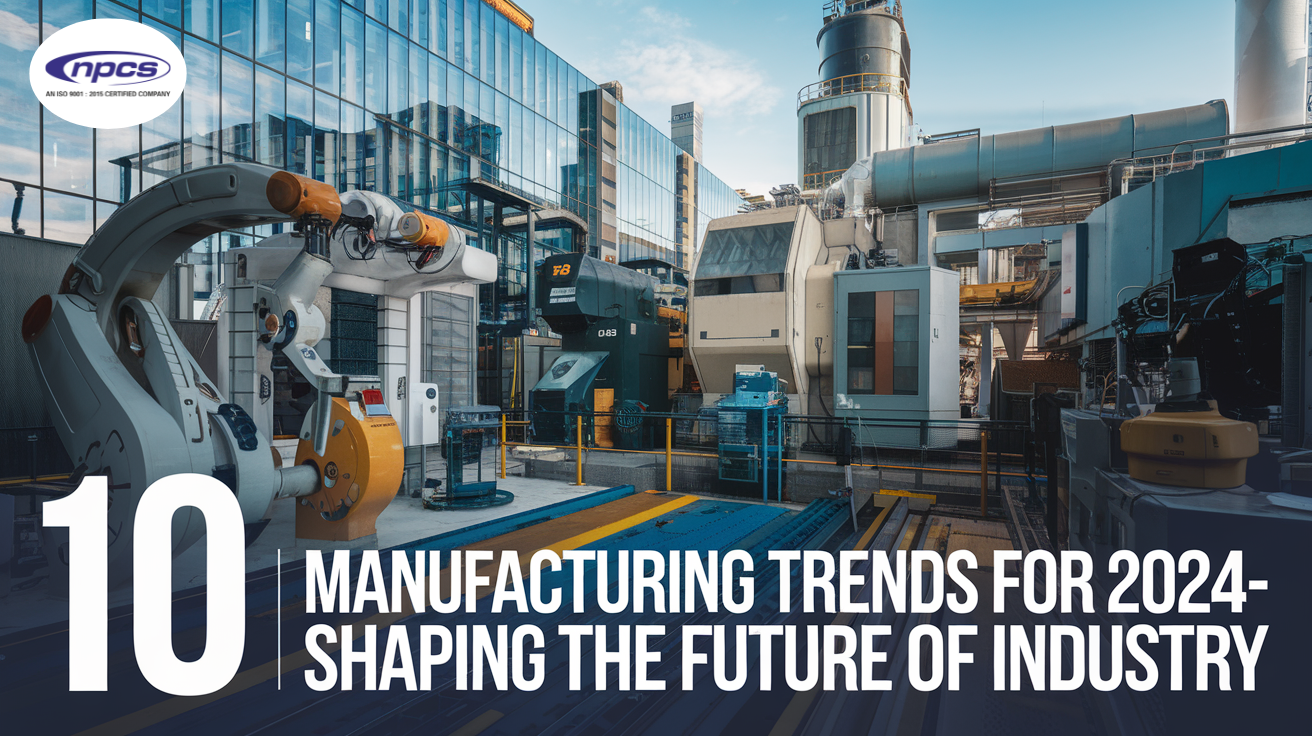Although manufacturing has continued to develop in the industry, modernization is essential. Below are top five trends that will mold up the future of development in the Manufacturing Trends for 2024:
For any Business related Query: Visit NPCS
1. Digital Twins
Adoption of Digital Twins, virtual replicas of actual manufacturing systems, is exploding. These digital simulations augment real-time monitoring and optimization capacity, which in turn helps improve efficiency and reduce downtime. Beyond real-time monitoring, digital twins in the manufacturing trends for 2024 will also allow advanced scenario planning and troubleshooting, enabling manufacturers to simulate and predict the impacts of various operational changes and external factors on their systems.
2. Reshoring
Manufacturers are focusing on the production backbone so much in recent years that most of their production is going back to home countries. The efforts of reshoring production are usually to make companies less dependent on foreign suppliers or countries by preventing the procurement of items coming from other countries. Also, this trend will work toward a more localized, responsive, and sustainable manufacturing ecosystem reducing dependency on one specific supplier to another. Also, it will help support and promote more innovations and quality improvements in local industries.
Related Books: Business books on several industries
3. Reskilling Workforce
Keeping pace with today’s technological advancements, manufacturers are set to undertake retraining of their workforce. These training interventions would cover a range of digital skills including automation and an analysis of data. Reskilling activities will most likely emphasise on interdisciplinary knowledge and skills, blending the traditional skills with those derived from digital systems. This will produce a workforce that becomes increasingly nimble and flexible in its ability to develop and engage with new, advanced manufacturing technologies.
4. Carbon Neutrality
Sustainability will continue to be emphasized in future manufacturing initiatives; manufacturing companies will get aggressive in their greening initiatives and emission limits to realize carbon neutrality. It is possible that the main trend in the striving for carbon neutrality will be a combination of energy efficiency practices, renewable energy sources, and innovations in material science. This also involves an approach towards sustainability in terms of product life cycle view.
Related article: Emerging Trends in Manufacturing Industries: Transparency Market Insights
5. Industrial Automation
Automation will be growing in the area of manufacturing, with robots and cobots enhancing productivity gains and improving accuracy. The advance of automation means that such activities will not only concern robots but also AI so that there is intelligent decision-making input into the process. This allows manufacturing systems to be constructed with more autonomy and self-governing characteristics.
6. Additive Manufacturing
3D printing and additive manufacturing will become even more integrated into the manufacturing process. This technology supports rapid prototyping, customization, and lowered waste. Advancements in it will lead to the use of a wider range of materials, including high-tech composites and biodegradable materials, opening new doors for sustainable manufacturing and complex product design.
Project Reports: Manufacturing Business Project Reports
7. Artificial Intelligence (AI)
AI analytics will optimize production lines, predict maintenance needs, and improve quality control to become a key enabler of efficiency. This will extend to the supply chain; demand will affect production forecasting, as well as be used in areas like human-robot collaboration, allowing production lines to become more responsive.
8. Industrial Internet of Things (IIoT)
Increased connectivity through IIoT devices will improve decision making due to real-time data availability and hence improved asset management and predictive maintenance. The IIoT will lead to supply chains that are more interconnected and smart, where data coming from different stages of manufacturing is integrated for more cohesive and transparent operations as an end of the development.
Business Ideas by Investment: Business Ideas with Low, Medium & High Investment
9. Cloud Computing
Manufacturers would be increasingly moving operations to the cloud for the purposes of remote monitoring and data analysis. Cloud-managed activities will increase their flexibility and scalability. Manufacturing processes will be run more in the cloud in the future. Virtual factories will be amongst the collaborative, distributed models. Facilities and capabilities will be delocalized and seamless to share.
10. Sensors and Connectivity
The sensors and the IoT device are collecting data to optimize the process. Smart product data will be tracked from manufacture to consumption. These all American but clearly states way smart products track their operational data-leading from manufacturing to consumption.
For Business related Videos: Visit Entrepreneur India
Conclusion
But in actuality, the manufacturing trends of 2024 is going through a tremendous change in digitization with sustainability and workforce development: the phenomenally popular market trend in the manufacturing industry. All these, in fact, imply a constant revolution in the manufacturing industry, submission to innovation, and turning back to resilience. Henceforth, for the sake of staying competitive and profiting in a dynamic global marketplace, manufacturers will have to subscribe to all of them.




